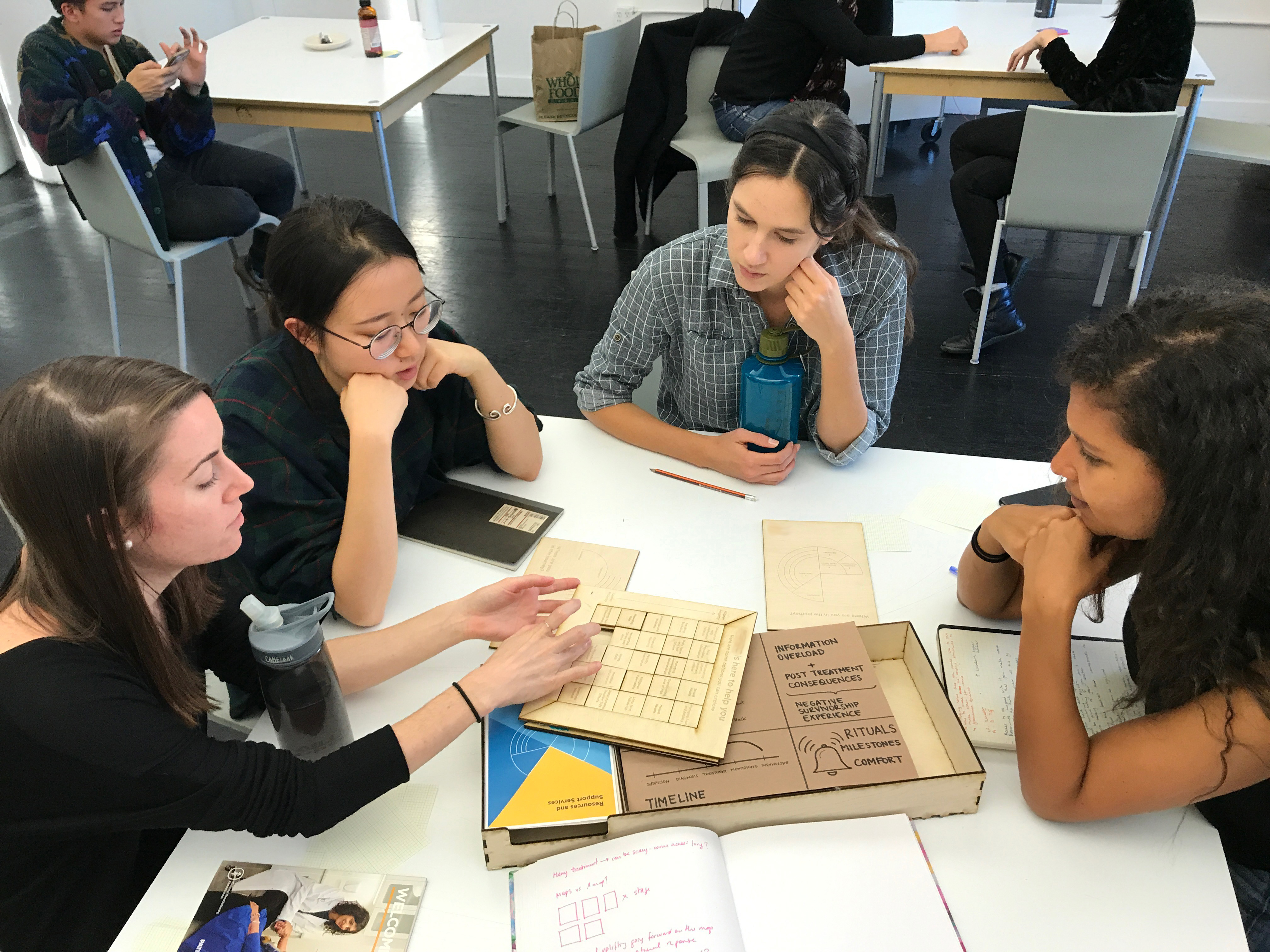Supporting patients as they navigate uncertainty and anxiety through the cancer journey
Globally, populations are growing older, medical advances are allowing people to live with chronic illnesses for longer and access to information enables patients to be more informed about their options. These trends have led to an exciting moment in healthcare; one where innovation can come from a diverse group of stakeholders, from patients and family, to clinicians, strategists, designers etc.
Working in partnership with New York City’s Memorial Sloan Kettering Cancer Center, Javiera Arenas and Emma Eriksson, MFA students of the Transdisciplinary Design program at The New School explore how design can play a role in creating a more supportive environment during transitions across the cancer patient journey. The moments between being diagnosed and beginning treatment, or between finishing treatment and beginning years of screening and monitoring, are two examples of transitions that cancer patients experience. These transition points are often bursting with uncertainty where patients and their loved ones may feel scared, frustrated, mistrustful, confused and above all, lacking in agency. The capstone project explores how design could play a role in creating more emotional comfort during such transitions.
The process included secondary as well as primary research methods like in-person, or telephone long-form interviews; short intercept interviews; and as ethnographic style observation in several hospital departments, design sprints and prototype testing. “The most challenging thing about the cancer experience is that almost every patient journey will look different”. Through the metaphorical lens of Transitions, literally, the passage from one stage, state, subject, or place to another; the project maps out the survivorship and journey of cancer patients, grounded in human-centered design methodology. Design opportunities were identified using a host of research and prototyping tools, mapping out the ecosystem of caregivers, patients, primary care and support teams, as well as, medical boards, fellow patients and resources outside of Memorial Sloan Kettering. Mapping patient’s journey helped visualise strategic interaction points for design interventions, including clinics and various departmental waiting rooms, along with hospital programs like Patient and Caregiver Education, Patient to Patient etc.
The project resulted in the design of three interventions, each exploring a different level of interaction.
- A new way for patients to navigate the resources available to them.
This intervention explores how patient information could be provided in a more patient-up-way (framed based on patient concerns) rather than the hospital-down approach that currently exists. The physical and digital tools developed for this intervention incorporated game design as a way of increasing access to resources that address the physical but also emotional, interpersonal, lifestyle and administrative concerns as a way of easing the anxiety patients experience during these transitions. - A way to visualize the inherent uncertainty of a patient journey.
Currently, there is no consistent way of describing or visualizing patient journey at the partner cancer hospital (MSK). This is also due to the fact that every patient’s journey is different. The visualization can be used to prepare patients for what they may experience in the future, and can also be used by patients as a tool to reflect back and find sense and meaning in their journey. - A way to mark these transitions through a ritual.
It was discovered that creating a moment of acknowledgement at these transition points helps to emphasize the progress made and can provide a moment of closure for patients, the designed ritual allows patients to leave behind a piece of advice and a small token or talisman that is about to go through the same experience as them.

TOP: A new way patients can navigate the resources available to them
MIDDLE: A way to visualize the inherent uncertainty of a patient’s journey.
BOTTOM: A way to mark these transitions through a ritual.



